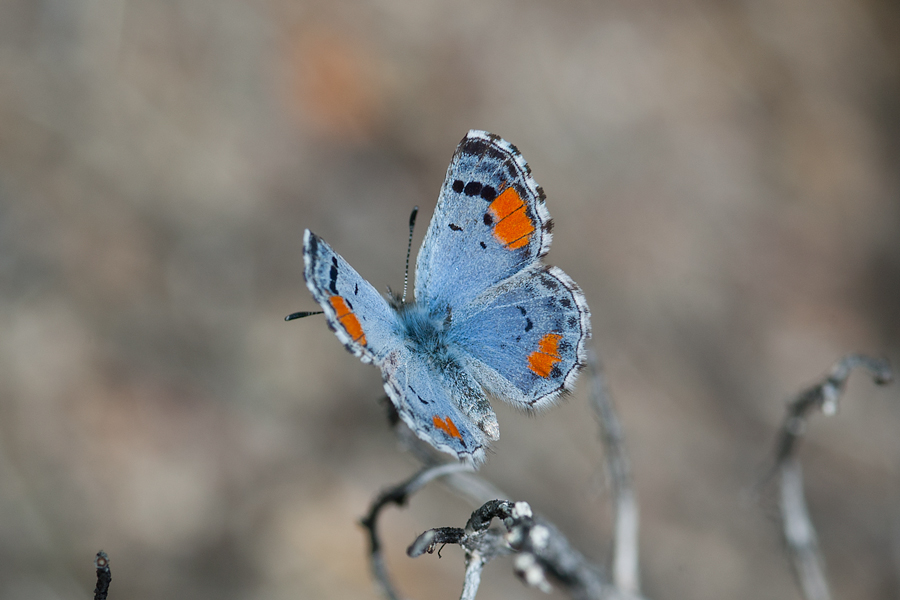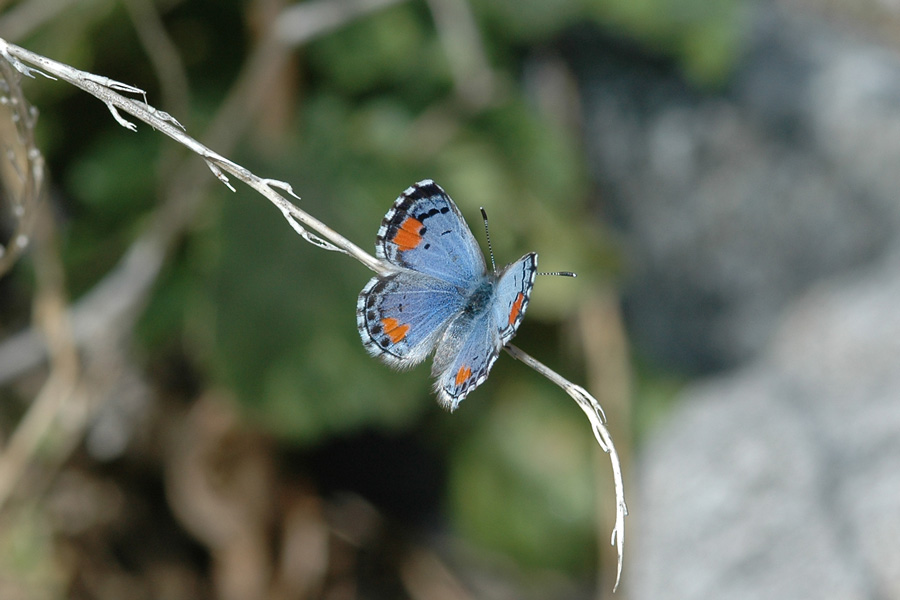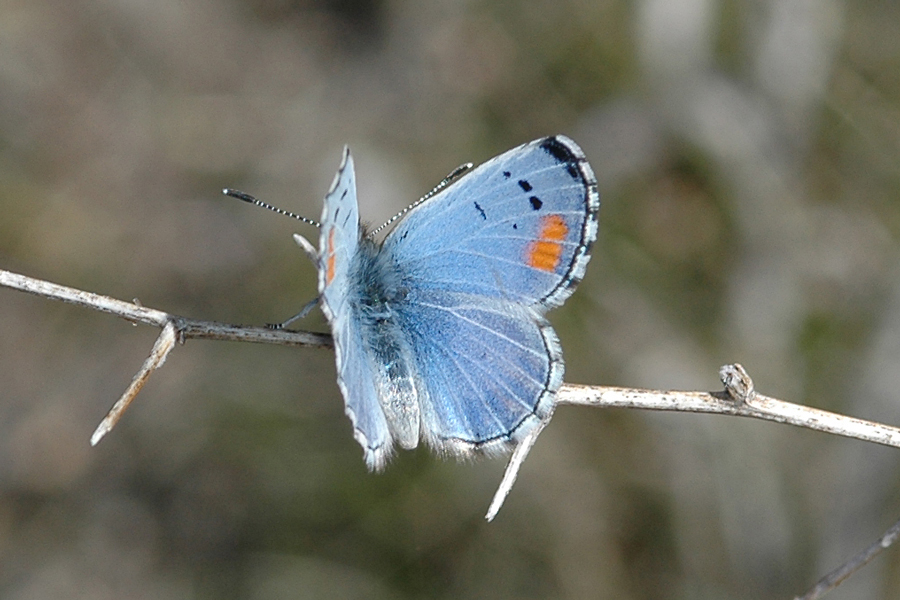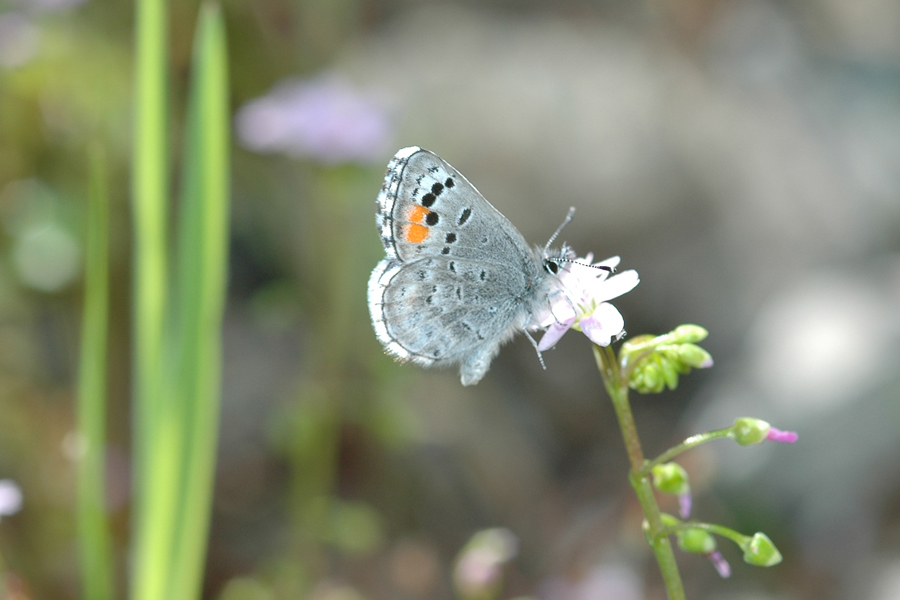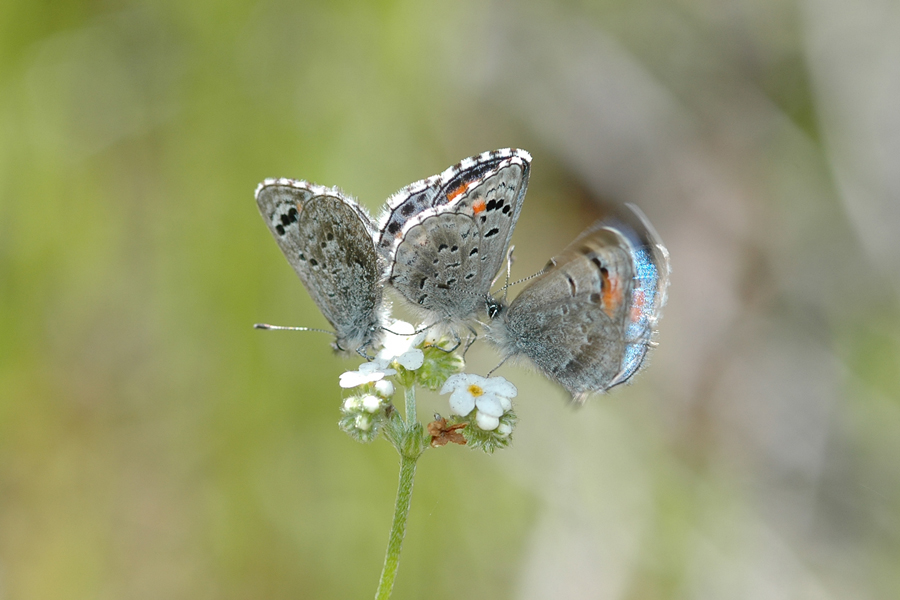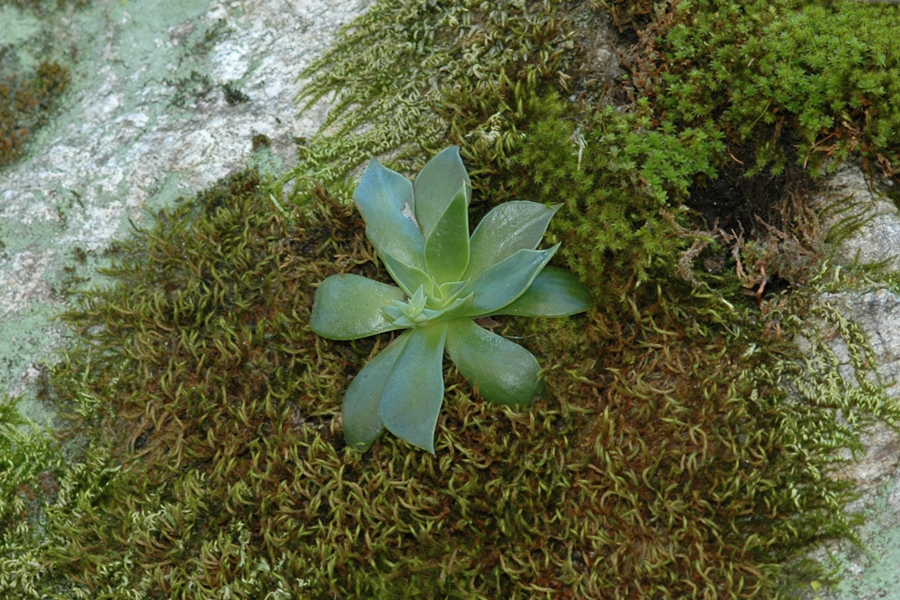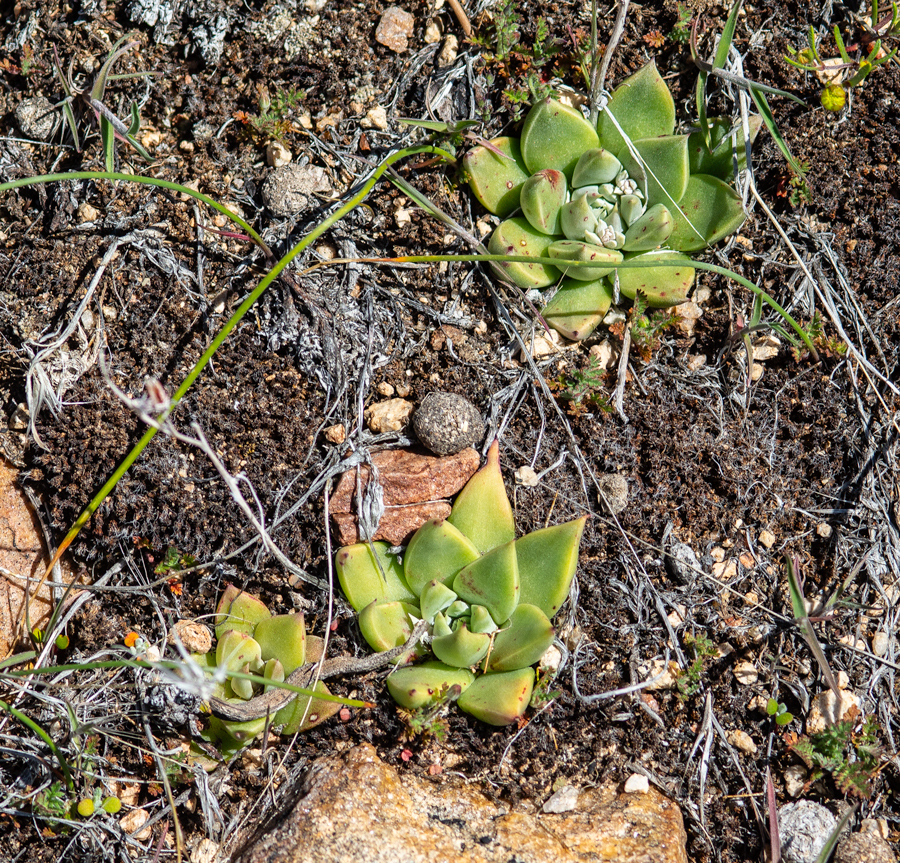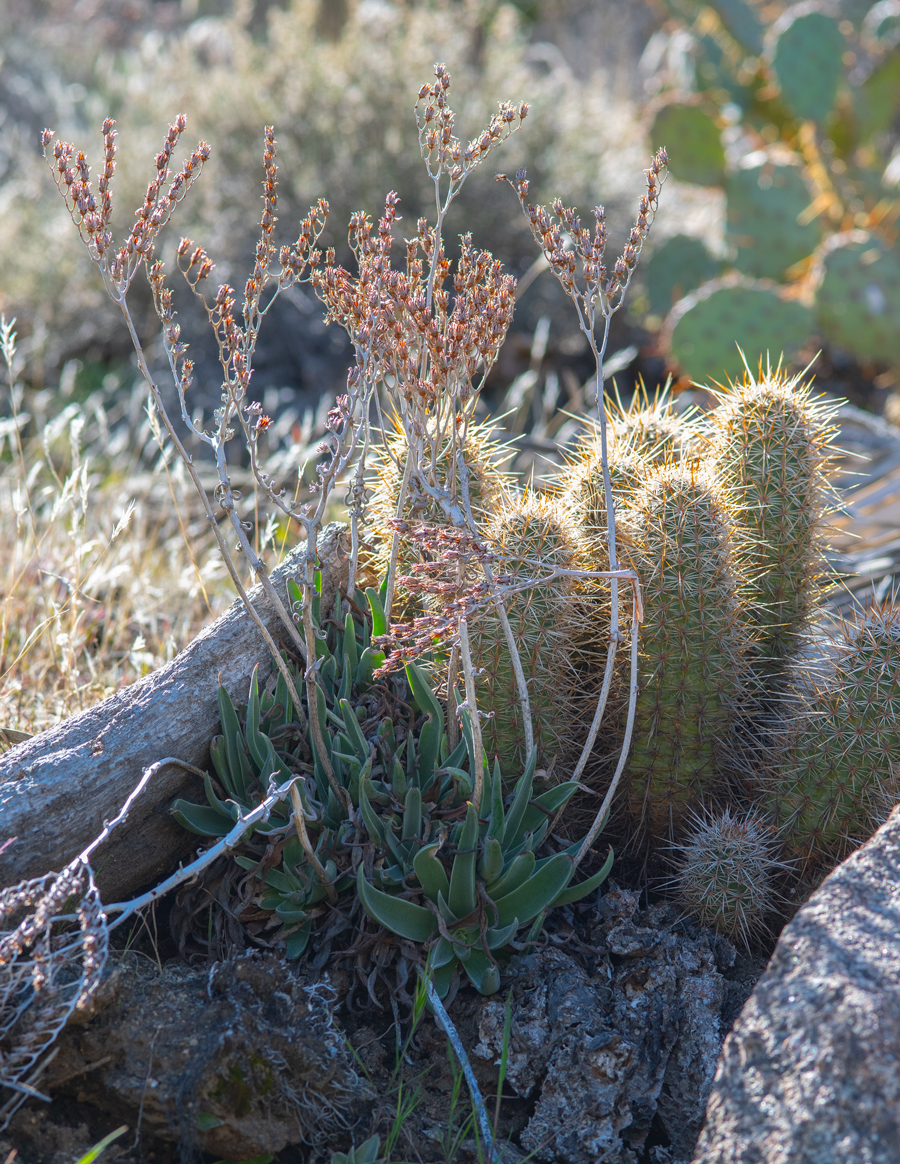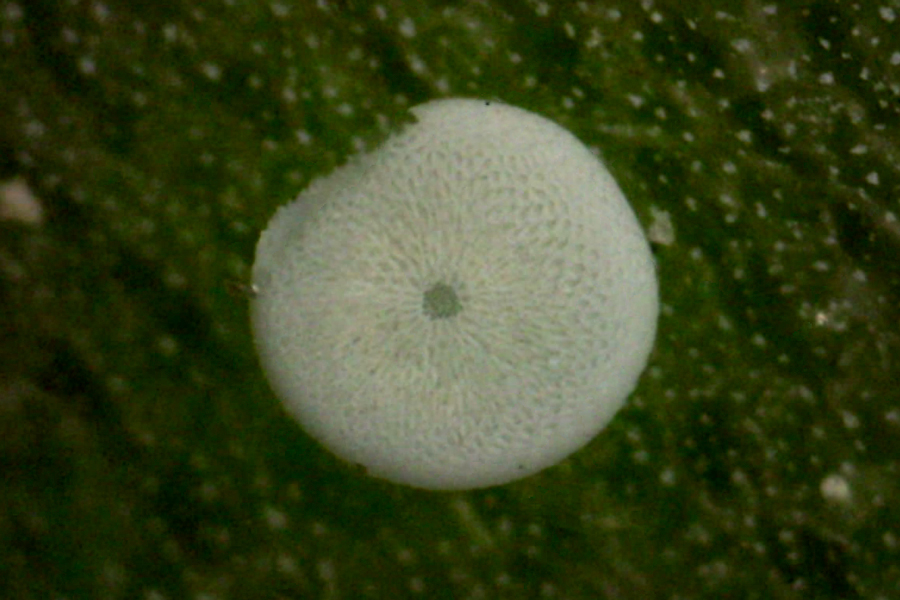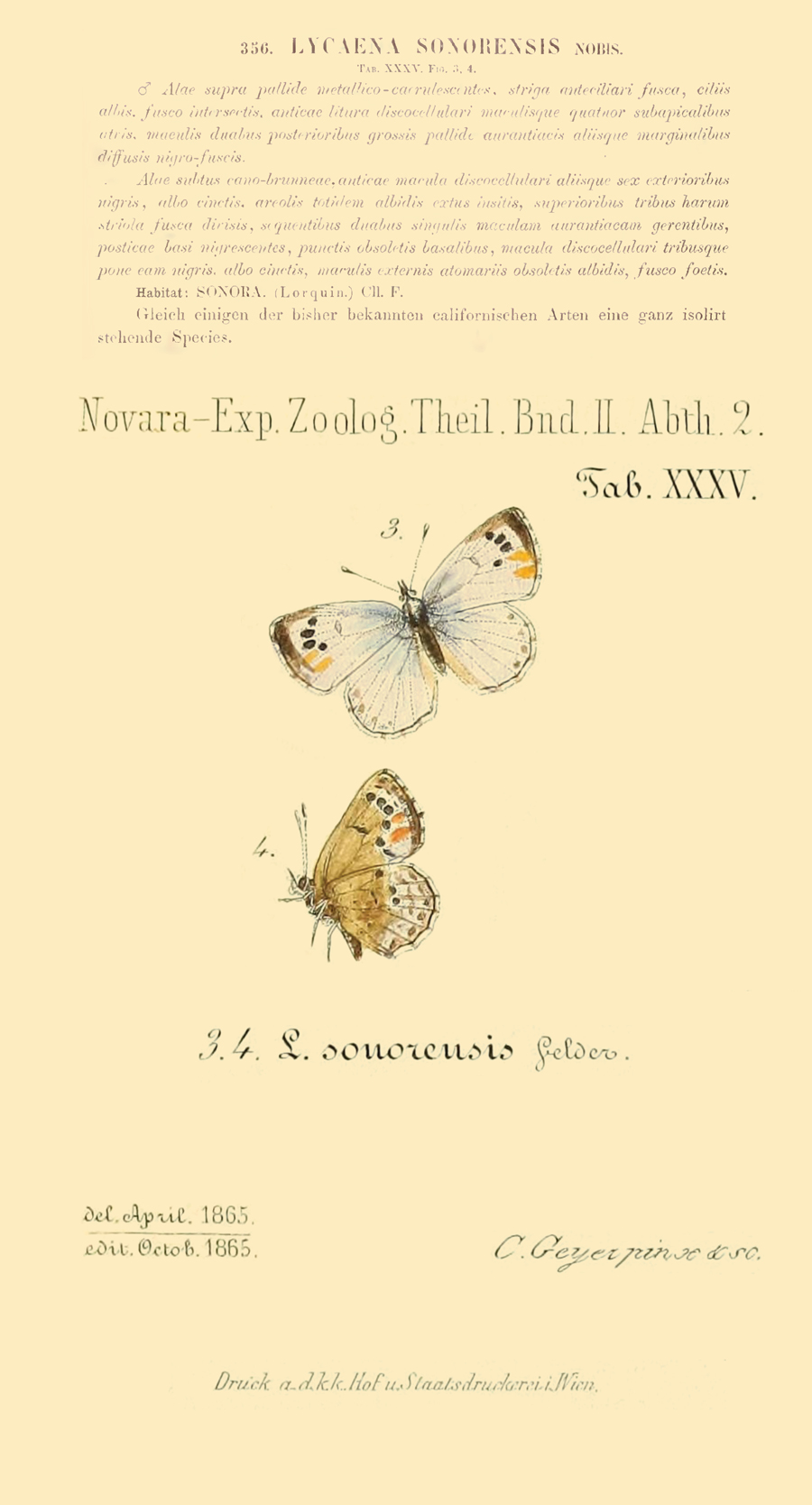Philotes sonorensis sonorensis
Sonoran Blue
The orange patches on the wings set against the light blue ground color distinguish this beautiful California butterfly. Its range extends from around Sacramento south to northern Baja ("Sonora" was how some referred to the area around what is now Los Angeles at the time of the gold rush). In southern California, it is probably best known from Anza-Borrego and from the San Gabriel Mountains; its habitat is mostly along the western side of the state, and it is absent (or mostly so) from the San Bernardino Mountains and Joshua Tree National Park, for example. For now, all living sonoran blues are considered the nominate species. There was a distinctive population at the San Gabriel River above Azusa that is now extinct: Philotes sonorensis extincta, not named until after its habitat was destroyed in a water project in the 1960s. The populations from coastal San Diego, the southern desert, and the Sierra Nevada may or may not merit subspecific status eventually. One thing I've personally noticed is that the females at Cactus Spring Trail have less extensive dark markings on the dorsal side of the wings than those up San Gabriel Canyon.
The larval food plants are species of Dudleya, including lanceolata, saxosa, cymosa, and probably abramsii and arizonenica. Sonoran blues, which are single brooded, fly early in the San Gabriels; I have a February 9, 2012 record, and many in March-April. This is along the West Fork Trail and Barrett-Stoddard Road. At Cactus Spring Trail in Riverside County, I have seen them late February through April. In some places they may fly well into summer. I do have one odd record: On April 27, 2020, I photographed a male at Coxey Meadow north of Big Bear. If there is a population in the area (gone before most people visit the area), perhaps they are using Dudleya abramsii there. According to Bruce Watts, a population in the San Jacintos (Morris Ranch Road) does use abramsii.
Larvae should be looked for after flights. I've yet to raise them, but it is said that they bore into the plant leaf, unlike Moss's elfins, which feed on the leaf surface. The caterpillars feed until mature and then pupate, and they overwinter in that stage.
